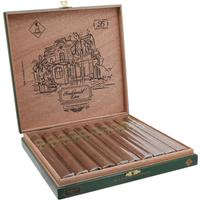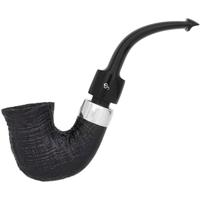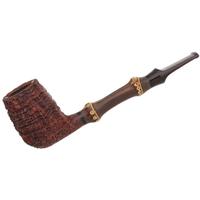I often get caught up in the beauty of some of the pipes I see and fail to actually discover why a pipe is called this or that and how it came to be. While browsing the recently added fresh pipes sections over at SP's this morning I saw one pipe that described it's shape as an Elephant's Foot. Now, the pipe I was checking out was by Tom Eltang and it's a beauty:
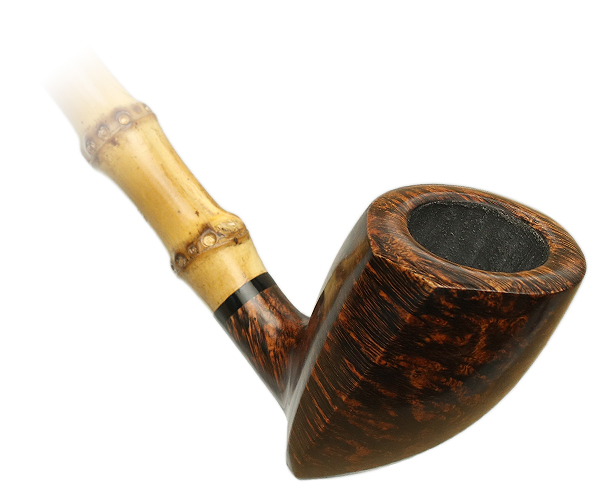
After I wiped the drool from my mouth, I started wondering why it was called an Elephant's Foot. After a little bit of research I discovered that this was entirely a Bo Nordh creation. Thepipeguys website probably sums it up the best:
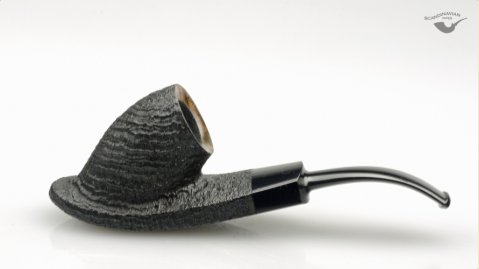
Again, from Thepipeguys:
Which one would you consider to be the most difficult to recreate? My money is on the Ramses just due to the skill involved with drilling the holes. Finding the right piece of briar has to be difficult enough, but then to carve on it and make it come out right is next level.

After I wiped the drool from my mouth, I started wondering why it was called an Elephant's Foot. After a little bit of research I discovered that this was entirely a Bo Nordh creation. Thepipeguys website probably sums it up the best:
In addition to the Elephant's Foot, he also gave us the Ramses shape. Another very difficult to create shape requiring a ton of skill to make it work:The Elephant’s Foot was created by the late legendary Swedish pipe maker Bo Nordh. Bo is one of the few pipe makers in the history of the craft that has been credited directly with creating not one, but two entirely new shapes. Finding a suitable block for the carving of an Elephant’s Foot is a task in and of itself. The grain must be nearly flawless in order to achieve the desired result, which is a gentle convex face covered from edge to edge in birdseye grain, the narrower flat sides of which should display perfectly contradictory straight grain. Likewise straight grain should radiate from the end of the shank toward the back of the pipe, which like the front should also have an ample endowment of birdseye grain. An Elephant’s Foot should almost always be entirely smooth, though partial sandblasting has sometimes been executed successfully.

Again, from Thepipeguys:
It's hard to believe just how beautiful some of these pipes are and what a pipe genius Bo Nordh was. He will surely be missed, but his original designs live on through other artists that recreate that little bit of pipe carving magic that it take to create such a wonderful looking pipe.A second entirely original shape attributed to the legendary Bo Nordh is the Ramses. It’s hard to mistake the Ramses for any other pipe shape, but bear in mind that the Cavalier, while similar in construction in some ways, has a round tube-like shank and base, while the Ramses shank and base are wider and flatter. Together, they have the appearance of a gently cupped hand holding the bowl. The Ramses is a very difficult pipe to form. The grain must be oriented in a very precise manner to achieve a beautiful result, much like Bo’s other original shape, the Elephant’s Foot. The tobacco chamber runs nearly parallel to the stem, which makes it very difficult to drill proper channel for the smoke and still maintain good smoking mechanics. To combat this, a true Ramses has the draught hole drilled so that it ends a few tenths of a millimeter away from the side and bottom of the tobacco chamber. Another hole is then made through the side of the tobacco chamber which meets the draught hole. This method allows the smoker to smoke the Ramses all the way down to the bottom of the bowl, which is a difficult thing to do with many fully bent pipes. Pipe makers are beginning to experiment with different finishes, but the Ramses seems most comfortable in a smooth finish. Bo Nordh was a true pioneer of both mechanics and artistry, the combination of which gave us the Ramses pipe, and what a beautiful pipe it is.
Which one would you consider to be the most difficult to recreate? My money is on the Ramses just due to the skill involved with drilling the holes. Finding the right piece of briar has to be difficult enough, but then to carve on it and make it come out right is next level.



